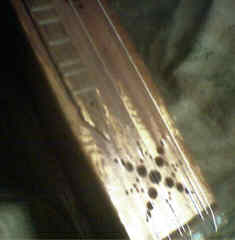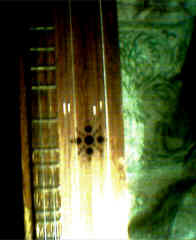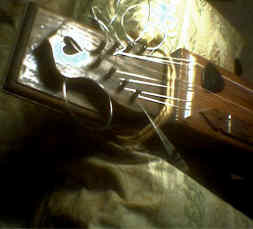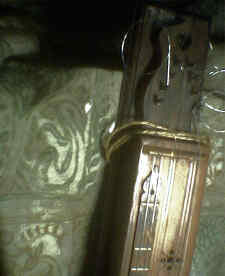~ Hummel ~

The hummel is a class of primitive Northern European / Scandinavian diatonic board zither (in this case Swedish) certain authorities would have us believe is a direct descendent of the monochord of Pythagoras or else an instrument of medieval origin; however, the earliest definite iconographic precedent is to found in the illustrations of Praetorius in Syntagma Musicum (1619) wherein is to be seen something called a Scheitholt, though records do exist in Norway of such an instrument surviving from the early 16th century. Thus the historical provenance is obscure but because of its somewhat ubiquitous nature as a folk instrument up until the early part of the last century (in which, like so many as aspects of traditional culture, it suffered decline & in many cases eventual extinction) we can at least allow for a medieval origin...

These Northern European diatonic board zithers are cited as being the ancestors of the Appalachian Dulcimer, an instrument still to be heard in folk-clubs the length and breadth of these islands. Also categorised as a 'balk monochord', the instrument is greater in length than in width and carries anything up to four unison melody strings over a diatonic fretboard, the remainder of the strings, in this case six, being variously tuned drones which run parallel over the body of the instrument; the name 'hummel' is believed to refer to the droning sound. Other names for similar instruments include Epinette Des Voges (France), Langspil (Iceland), Langeliek (Norway), Humle (Denmark) & Citera (Hungary).

I acquired this particular instrument in 1981, mail-order, sight unseen, love at first sight; I was told initially that it was made by one Van Der Leveew, but later learned that in all probability it is an antique instrument which Van der Leveew restored - it certainly feels old, and I have never seen anything quite like it in almost a quarter of a century, so who knows? Of a maximum of three melody strings, I use but two, playing these either in unison or in thirds, as as was the case with certain traditional players, such as Otto Malmberg who in 1917 was observed (but not recorded) playing in just such a way. The instrument is designed in such a way that when played upon a tabletop the sound is greatly amplified; when played upon the lap however, the sound is soft and intimate, ideal for the accompaniment of both storytelling & traditional ballads; an ancient sound, both haunting and compelling in its elemental simplicity.
comments, questions etc. - hummel@sedayne.co.uk
